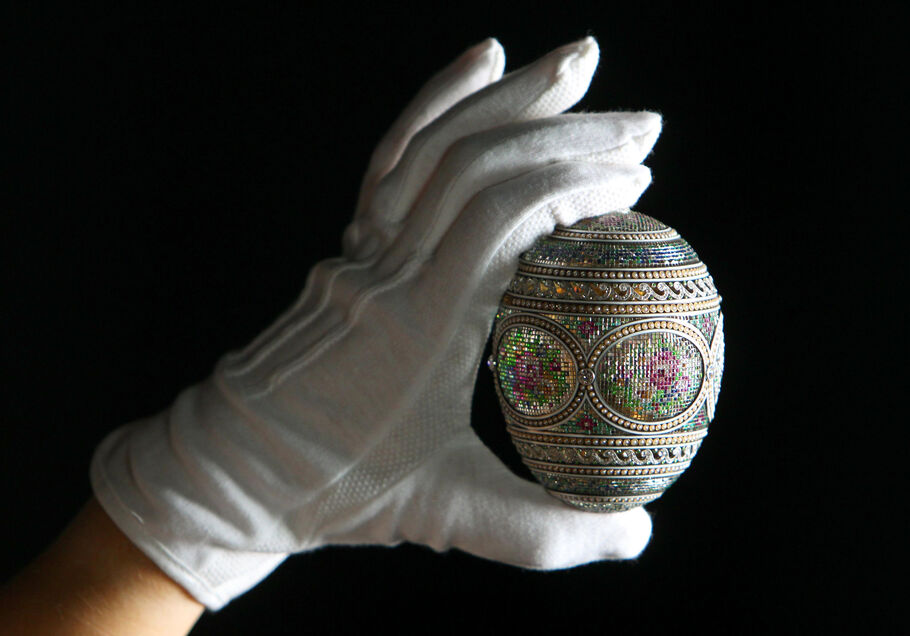THE FABERGÉ EGG REIMAGINED

As an art and design history enthusiast, I am prone to diving down rabbit holes, and our artist Gianfranco Briceño tends to send off on a hunt. In the past, my Briceño driven research has been surrounding Greek Mythology, but my latest exploration has been into the history of the Fabergé egg.
A few months ago, Gianfranco reached out to me with an idea to delve into a new shape, his interpretation of the iconic Fabergé egg, infused with his distinctive artistic style. Instantly captivated by his enthusiasm and intrigued by the concept, I eagerly embraced the opportunity. It seemed like the perfect endeavor, especially as we approached the season of Easter and the blossoming of spring.
 |
 |
 |


The history of the Fabergé egg is a tale of opulence, craftsmanship, and imperial patronage.
It begins in the late 19th century in Russia under the reign of Tsar Alexander III. In 1885, Alexander III commissioned the House of Fabergé, a renowned Russian jewelry firm, to create a special Easter gift for his wife, Empress Maria Feodorovna. The gift marked the inception of what would become one of the most iconic and coveted creations in the world of luxury art.


The first Fabergé egg, known as the "Hen Egg," was a marvel of craftsmanship. Crafted from gold and enamel, it opened to reveal a golden yolk containing a tiny hen, which in turn contained a miniature diamond replica of the imperial crown and a ruby pendant. The Empress was so delighted with the gift that Alexander III appointed Fabergé as the official jeweler to the Russian Imperial Court.
Over the next three decades, the House of Fabergé produced a total of 50 exquisite eggs, each more elaborate and intricate than the last. These eggs became synonymous with the extravagance and elegance of the Russian Imperial Court, and they were often given as Easter gifts between members of the royal family.
According to Fabergé family tradition, the company was given complete creative freedom for future Imperial Easter Eggs. Not even the Emperor knew what form they would take: the only stipulation was that each one should contain a surprise.

However, the Russian Revolution of 1917 spelled the end of the Romanov dynasty and the House of Fabergé's association with the imperial court. The Bolsheviks seized power, and the Fabergé workshops were nationalized, leading to the dispersal of many of the eggs. Today, only a fraction of the original eggs are accounted for, with some residing in museum collections and others in private hands, fetching staggering prices at auction. Despite their tumultuous history, Fabergé eggs remain enduring symbols of luxury, artistry, and a bygone era of imperial splendor.
|
Vintage Sterling Silver Candelabra Vintage |
Charlotte Glass Set Vintage |

|
Marilyn Glass Set Vintage |
Vintage Sterling Silver Candle Holder Set Vintage |
Gianfranco Briceño's reinterpretation of the Fabergé egg is the original masterpiece's newer, cooler, great-great-great grandchild. Infused with Briceño's signature texture, style, and quirky sensibility, this contemporary rendition breathes fresh life into a timeless symbol of luxury and craftsmanship. In his hands, the Fabergé egg becomes more than just a relic of history; it evolves into a vibrant and dynamic expression of creativity, ready to captivate and inspire a new generation.




